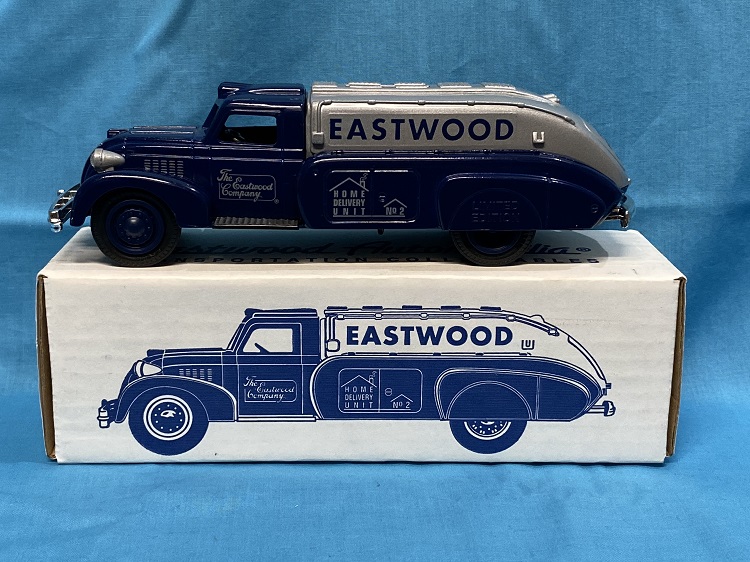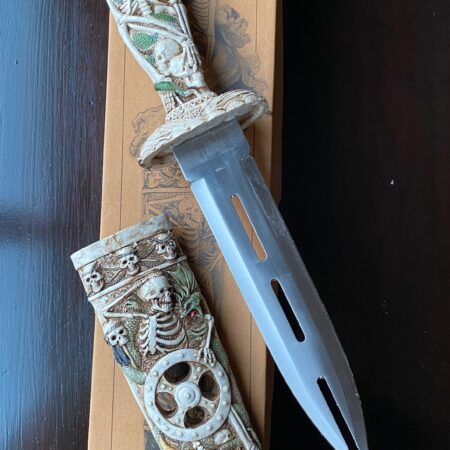When it comes to improving one’s home, perhaps one of the easiest, quickest and least expensive ways to create a stunning, significant impact to a home is to consider painting. I guess nothing revives perks-up tired walls, weatherworn siding, or adds a touch of style and some sort of uniqueness better than a new coat of paint. When you say painting, it can be like an instant renovation.
Painting is actually cheap, not to suggest. The truth is, there is something more than just being cheap. Painting in fact involves a serious commitment of time, money and of course, effort. Note that this is a requirement, whether you do it yourself or hire a professional. You want to get it right the first time, so you won’t be back on ladders in a couple of years, right?
Choosing the Right Paint
As you may realize, one of the most important decisions you will encounter when planning a home improvement through painting is choosing the right paint. To tell you honestly, this is critical to whether or not your paint job will look good and last for a number of years. However, there are instances where choosing the right paint can be tricky. The paints today have gone through such dramatic changes in the past few years that it is now becoming hard for us to know what to purchase. But don’t despair. There is still hope for that.
The following information will give you a closer look on how to choose the right paint so you can make clear, informed decisions. Just read on.
The Paint Basics
Essentially, paint is a mixture of pigment, resin and a carrier. The main, white pigment is said to be the titanium dioxide, and relatively small amounts of other pigments are added by the paint dealer to tint the color. Resin, on the other hand, is what makes paint adhere to a surface. And the carrier is the evaporative liquid that is usually added to thin the mixture so you can brush or roll it on water for latex paints or a solvent for oil or alkyd paints.
Paint also contains clay or other inert ingredients which are added to adjust the paint’s sheen. It may also contain small amounts of secondary solvents that help gloss, drying characteristics and the like.
Further worth noting is the fact that the amount of quality of every ingredient is what determines the performance and price of paint. Paint with plenty of titanium dioxide, for example, has strong hiding characteristics, and since this pigment is the most expensive ingredient, the paint no doubt costs more. On the other hand, those oil or alkyd paints that use odorless mineral spirits as a carrier are pricier than those with regular solvents. Given this fact, it can be concluded then that price is a good indicator of quality.
Latex Paint of Oil/Alkyd?
The most perplexing question for homeowners when it comes to house painting is “Should we use latex or oil/alkyd?” Well, according to some experts this common confusion is rooted in history. It was noted that for years, solvent paints were favored for trim, woodwork, most exterior and some interior surfaces for the reason that they flow uniformly. Also, many have noticed that these solvent paints have superb leveling characteristics and adhere well particularly to poorly prepared or chalky surfaces. They even give a tough, hard-shell finish, and most of the exterior alkyds can be utilized in sub-freezing conditions.
However, such conception has been changed nowadays. The change is in the wind, so to say. The fact is, today both state and federal air-quality laws are clamping down on the use of solvents in oil/alkyd paints. Well, the problem is, a gallon of solvent-based paint contains about two quarts of mineral spirits. It is these solvents actually that evaporate into the air as volatile organic compounds, resulting to air pollution.
In the near future, it is commonly heard that the federal Environment Protection Agency (EPA) is expected to issue certain guidelines to all states, setting minimum standards for the paint formulas. As you may know, there are a number of state regulations these days that align-with or exceed-these standards. And some of the experts say that solvent paints that comply with these standards don’t really have advantages over the water-based paints. The fact is, they dry slower and are more difficult to apply. They even cost more.
After saying all of this, I think the bottom line is this: technology has changed so dramatically that the best paint option considered in most situations will be latex. It may eventually become your only option.
Alkyd-Modified, Vinyl-Acrylic, or Acrylic?
So it is given that the most favored type of paint these days is latex. Now, latex paints are not all the same. Note that although the first known latex paints were named after their synthetic “latex” rubber base, the synthetic rubber is not used anymore. So, now when you say “latex”, it refers to all water-borne paint. However, within that category, you have three choices: vinyl-acrylic, 100 percent acrylic, and alkyd-modified latex.
So, what is the best option?
In the first place, vinyl-acrylic latex is by far the least costly latex paint. But this is considered appropriate for most interior walls as well as for shorter-durability exterior walls.
The well-known high performance interior paints on the other hand are 100 percent acrylic. Many have claimed that this kind of latex paint has better color retention, better adhesion, and better gloss than vinyl-acrylic in the case of enamels.
Finally, most of the high-quality exterior paints are either 100 percent acrylic or alkyd-modified latex. Both of these types are excellent though. However, if the siding was previously painted with an alkyd or is chalking, considering alkyd-modified latex is a nice move to take. It has been said that the alkyd-modified latex does an excellent job of penetrating and anchoring the coating on a chalky surface. But many of the manufacturers these days consider 100 percent acrylic as their best products.
“One-Coat Hiding” on the Label
When choosing the right paint, also look at the coverage, sometimes called “hiding”. For many experts, the “hiding” is another distinguishing property of a good paint. So, when a label says “one-coat hiding”, read the fine print. Be aware that an interior or exterior finish that is guaranteed one coat should cover in one coat when properly applied, without any exceptions. I guess it is quite obvious that one-coat hiding is a major label saver and well worth paying a premium to obtain.
There is one particular determining factor for good hiding – the level of titanium dioxide in the mixture. As often said, the more the paint contains titanium dioxide, the better the hiding. Today, most flat paints use cheap fillers to attain high levels of hiding. The downside is that the rest of their characteristics, such as scrubbability fall short.
The Scrubbability Rating
Interior paints have a scrubbability rating, which is formed through standardized testing. Basically, this is a good indicator of the toughness of the paint’s film, as well as its ability to withstand physical abuse. However, there are some instances that this rating may not be posted on the can. So, if this is the case, a paint retailer should have information on the rating. What you can do is to compare the ratings and you will obtain a good idea of the quality of the paint.
If you are using a flat paint on the interior walls of your house, just note that there is a tendency that it can be washed, but it doesn’t take kindly to scrubbing. If you scrub it with a damp cloth, you will only remove the dirt or smudge, but exposed pigments particles actually become burnished or polished, which in turn damages the finish. So, how to avoid this? Simply choose a high-performance eggshell paint rather than flat paint.
The Paint’s Sheen
Paint may have any of the several Lustres. From dull to shiny, the paint could be flat, eggshell, pearl, satin, semi-gloss, or gloss. Essentially, the paint’s luster depends upon its mixture of pigment, resin and inert ingredients. It is often considered that the paint with les pigment and more resin is glossier than the reverse. Enamel is also a term that usually denotes an extra-smooth, hard surface coating, which is typically the result of using a lot of resin in the paint formula.
As a homeowner who wants to apply paint for home improvement, it is important for you to know that the glossier a finish, the more durable and washable it tends to be. Perhaps what is important for both exterior and interior walls is the use of flat paint, which is deemed great at hiding irregularities and surface imperfections. The pearl and eggshell paints are a compromise. As commonly noticed, they hide imperfections partially and are more washable than flat paints.
For painting the interior, many experts often recommend flat paint for ceilings, eggshell for walls and semi-gloss or gloss on doors and trim. On the other hand, the exterior calls for flat or satin wall paints and semi-gloss on trim.
Knowing Which Room
When considering painting for home improvement, it is always important to have an idea of how a particular room will be utilized. This is also very critical for choosing the right paint. In functional rooms like kitchen, baths and bedrooms, for example, you might want durability and easy maintenance first. In more decorative rooms, such as living rooms, master bedrooms or dining rooms, note that appearance is often the key factor. And, in a child’s room, safety is very critical. So, choose the right paint that suits best on every room.
Be Brand Conscious and Meticulous
So you’ve made a clear decision regarding the type of paint. The next thing to do now is to go with reputable brands. Of course, you need to tailor your choices to the project, but avoid wasting your time, effort and money on low-quality paint. There are a lot of significant differences between cheap and quality paints, and these differences are often seen in characteristics such as washability and hiding. There is also a possibility that you’ll find a more extensive color palette in the quality lines.
Lastly, always remember to check the warrantee on the label, which is a benchmarking device that typically provides you with a fair measure of the differences between quality levels of different paints.
Estimating House Paint Quantity
So, you’ve learned a lot about the types of paint, the quality, and some factors to consider when choosing the right paint. Now, let us figure out how much paint you will need for your home improvement project.
The first thing to do to identify the quantity of paint needed is to know the square footage of the area to be painted, as well as the spread rate of the paint. Note that the spread rate is typically about 400 square feet to the gallon. But still check the can to be sure.
Now, how to determine the square footage?
Here are steps that you should follow:
Start by measuring the width of each wall.
- If done, add the figures together and multiply the total by the height of the surface.
- Estimate how much of this area will not be painted. To do this, take into account the fireplaces, wallpaper, windows, and some sections that you will paint separately, like the trim.
- If the surfaces account for 10 percent or more of the room, deduct the square footage from the total.
- Divide the total square footage by the spread rate of the paint.
- Calculate the amount of trim paint separately or expect that you will utilize about a quarter as much trim paint as wall paint.
That’s simply it!
Basic Painting Steps
Are you now ready to paint? If so, then follow these basic steps to paint your house beautiful. The directions will basically take you from repairing the damaged surfaces, priming the walls and using the roller to covering hard to reach potions with a wall brush and painting the woodwork. After you have followed these steps and completed the task, I am sure that the result will be impressive.
Step 1: Do Some Repairs
The first thing you need to do is to repair and replace any damaged surfaces, whether stucco, wood, masonry or metal. Then, wash off all surfaces. Use a high-pressure water sprayer, which is usually available for rent, to reduce labor. After that, make sure that the surfaces dry thoroughly. You can use sandpaper or a paint scraper to remove any loose, cracked, chipping or blistered paint. You can apply this even down to the raw surfaces if necessary. Also, use a small drop of cloth as you go to catch loose bits of paint and debris. Patch all nail or screw holes, gouges and cracks. You can caulk such spots as seams and corners, above door and window trim, as well as where trim meets siding.
If you find some serious problems in woodwork, use epoxy filler to repair those surfaces. Then, cover dark stains with a stain blocking primer. The same goes for mildewed areas.
Step 2: Prime Time
Unless the existing finish is flat, you will need to apply a prime coat to make a new paint adhere. Experts often suggest that on the flat-painted walls with minor repairs, you may simply choose to spot prime. However, for walls with larger areas of patching plaster, it is best to employ a sealer or primer. Note that priming doesn’t require as much care as painting, but it is done the same way.
Step 3: Ceiling Brushwork
Before painting, consider first the ceiling. What you can do with it is to cover the perimeter and unpainted areas around the fixtures.
Step 4: Consider Rolling
So, you’ll want to start with the ceiling. Okay! In sections about six feet square, use a series of overlapping “W” strokes from right to left, then back from left to right. However, if you are using any other finish than flat, go over the entire ceiling once again with one directional, overlapping and non-diagonal strokes to blend the paint. Repeat the same steps with the walls, now covering to within 1 ½ inches of all edges. Note that the final non-diagonal strokes here should be from top to bottom.
Step 5: Wall Brushwork
It is important to note that unless you are very skillful or you’ve got an edging painting tool, you should mask the perimeter of the ceiling with painting tape, and then paint the upper perimeter of the walls, including the spots that cannot be covered with the roller.
Step 6: Back to Seconds?
If you find that the ceiling and walls need a second coat, wait for the first coat to dry. To simply put it, you can do the second coating after the first coat dries. It is perhaps necessary to check the label for the manufacturer’s coating guidelines.
Step 7: Windows, Doors, Trims, and Baseboards
Protect the newly painted wall surfaces with the use of painting tape or paint edger while you paint the woodwork. As commonly suggested, the doors can be wedged open with a rolled-up newspaper. However, be sure to place a drop of cloth underneath them. A roller also saves time on a flat door, and a door with panels needs a brush. In terms of double-hung windows, all you need to do is to pull the top sash down and paint the bottom part of its first. Then, put it back up and paint the top part of it, followed by the bottom sash, then the jabs and frame.
Just a warning: If you are using anything other than water-based latex, never put paint-soaked or cleaner-soaked tools or rags in an enclosed area of any kind, even a trash can with a lid. Note that this is considered as a recipe for spontaneous combustion.
Some Painting Safety Tips
It is obvious that paint is fairly user-friendly; however, there is nothing wrong with exercising caution when working with it. Following are some basic guidelines for painting your house safely:
- Always consider working in a well-ventilated area. If possible, open doors and windows and use exhaust fans. Also, keep your pets, if you have, out of freshly painted rooms.
- If you cannot ventilate the area well enough to get rid of dangerous fumes, you can wear a respirator approved for such use.
- When sanding, wear a dust mask and safety goggles to keep yourself from breathing in dust particles. This will also protect your eyes.
- Wear safety goggles, gloves and a respirator when you are using chemical strippers, strong solvents, or caustic cleaning compounds.
- Use canvas drop cloths on the floor. Remember that cloth stays in place and isn’t as slippery as plastic.
- Avoid using or storing paint products near a flame or heat source. In relation to this, do not smoke while painting or using thinner.
- Check ladders for sturdiness. Just make sure that all four legs rest squarely on the floor and that both cross brakes are locked in place. Never stand on the top step or the utility shelf. And never lean away from a ladder. Get off and move it if you cannot reach a spot easily.
- After painting, clean up promptly and properly dispose of soiled rags. Experts also suggest that to eliminate any chance of spontaneous combustion, spread rags that are soaked with alkyd paint or thinner outdoors and let these dry all day before disposing of them at a toxic-waste dump. Never leave those rags to dry in areas that are accessible to children or pets.
After saying all this, are you still with me? If so, congratulations!






